Canyon and Ridge Flying
Mountain Flying
Mountain Flying is defined as that type of flight that involves maneuvering in areas exhibiting steep or precipitous terrain, without regard to the elevation of that terrain. The terrain may only be 1,000 feet above sea level. But if it is abrupt or sheer terrain, it qualifies as mountain flying.
The term "mountain flying" often is called "contour, drainage or terrain flying."
Mountain flying may involve flying through the mountains where the surrounding terrain is higher than the airplane.
It is also acceptable to describe mountain flying in terms of flying over the mountains. In this case the pilot selects an altitude 2,000 feet above the highest terrain within about 5-statute miles of his course.
Regardless of whether you are flying with the mountains or over the mountains, the basic premise of all mountain flying applies: "Always remain in a position where you can turn to lowering terrain."
Flying Canyons
Recalling an afternoon flight from Billings, Mont. to Jackson, Wyo. during the fall of 1968, I found myself, as a novice pilot, positioning my airplane in the middle of canyons for what I considered good reason ... staying away from those scary old canyon walls. This is when I first discovered that flying in the center of a canyon places the airplane in a poor position to turn around and backtrack to avoid some scattered thunderstorms passing through the canyon area.
I later learned there are two compelling reasons to avoid flying the center of the canyon. First, there is only half the canyon width available for a turnaround maneuver if the canyon narrows, the terrain begins to out climb the airplane, or if the weather provides an impelling reason to skedaddle the area.
Second, the center of a canyon is the area where shear will b e found. Air flowing down the lee side and up the windward side of a canyon creates turbulence.
Fly the side of a canyon to allow for a turnaround maneuver.
Depending on the stability of the air, or lack of stability, there is often found an area that lacks any type of a meteorological emulsifier to mix the air; rather, the air sets up an eddy current that creates shear.
If you have a choice when flying through a canyon, fly the upwind side. It provides a better ride and there in no-compromise with aircraft performance degradation due to downdraft s and turbulence.
Canyon flying can be broken down into three broad classifications: the wide canyon, the narrow canyon and the downslope canyon.
Wide Canyon with Level Terrain
This canyon does not pose a problem for flight. Still, to avoid the possibility of shear, the flight path should be along one side. How close you fly to the side depends on the circumstances and stability of the air. If you are trying to take advantage of potential lift, you will find 500 feet from the canyon side is an acceptable distance. Occasionally, to take advantage of any uplifting air it will be necessary to move closer to the canyon walls.
Narrow, Upslope Canyon
The narrow canyon is defined as being of a width that if a turnaround is required, the airplane will use more than one-half of the canyon width.
Radius of turn is defined as being from the center of a circle to the outside edge. This often creates confusion for the novice pilot who thinks he can turn around within the computed value of the radius of turn. The airplane begins its turnaround on the outer edge of a circle. It is necessary to double the value of the radius to determine the width of the turnaround.
Turn around and gain additional altitude
before the terrain out climbs the airplane
or the canyon narrows to prevent a turn.
For normal flight through a canyon, even one with upslope terrain, the flight is generally made on the side with the updraft.
Flying up a narrow canyon is different; it should be accomplished by flying on the downwind side. This way, if you get into trouble and need to reverse course, you are not turning into a worse situation,. Flying in a narrow canyon along the updraft side will cause the airplane to penetrate into the downdraft side during a turnaround maneuver.
Downslope Canyon
Normally the downslope canyon can be flown on either the updraft side or the downdraft side. Since terrain clearance is not a concern, if you get in a downdraft and feel uncomfortable, move to the other side.
Canyon Turnaround
I had a student who was introduced to flight by a buddy while in the military (you will be hard pressed to find better pilots than the ones trained by the military).
John, in response to my ground school question about a canyon turnaround, told me in all seriousness that if he was ever "trapped" in a canyon he would do a hammerhead stall to get out.
There are a couple of problems with his idea. Generally by the time a pilot realizes he is in trouble, the airspeed is too slow to perform a hammerhead stall or a hammerhead turn. The second problem, even with sufficient airspeed, most of us do not fly aerobatic airplanes in the mountains.
The proper procedure to reverse course is to use the steepest bank you are comfortable flying at the slowest speed possible.
Speed is important. Go outside and draw a six-inch circle on the ground. Place your feet within this circle (as much as possible), and turn around slowly. You can complete a 360-degree turn without your feet leaving the circle. Next, while walking about two miles per hour, try to keep your feet within the circle. Not possible. As your speed increases, the radius of turn increases. The same thing happens to the airplane. The faster the airplane is flown at any given bank, the larger the radius of turn.
Crossing Ridges
Without experience the visual aspects of determining whether you are higher than an approaching ridge can be deceiving. The spot method works well to determine your altitude (the spot method is not covered in this article).
As you approach a ridge, turn to a 45-degree angle to allow a safe retreat if you encounter downdrafts or turbulence. This recommendation does not suggest that if you fly perpendicular to the ridge and need to reverse course that you will not be able to do so. The main reason for the 45-degree approach is to ease the forces on the airplane.
This recommendation does not suggest that if you fly perpendicular to the ridge and need to reverse course that you will not be able to do so. The main reason for the 45-degree approach is to ease the forces on the airplane.
If you approach a ridge "head-on" and need to reverse course, during a 60-degree bank the airplane experiences a 2-G load factor. Turbulence can add to the load factor where it can exceed the normal category limits. The 45-degree angle approach allows a turn to lower terrain with less bank angle and less force on the airplane.
When you want to know whether or not you have sufficient altitude to cross a ridge, determine ridge clearance with the "spot method for landing."
I used to teach students to pick an arbitrary point near the top of the terrain on the other side of the ridge. Then they looked for the lowest point they could see on the other side of the ridgeline. As the airplane approaches the ridge, if the distance between the two points is increasing, the airplane is higher than the ridge and the flight can most likely continue.
I found this method does not work well with students. The students becomes so involved with watching the points that they develop "tunnel vision," where they are not aware of anything else that's going on with or around the airplane.
To determine if it is safe to cross a ridge, continue (you are flying at a 45-degree angle that allows an easy escape) until you are at a point where, if the power is reduced to idle, the airplane will glide to the top of the ridgeline. It is not proper technique to reduce the power when crossing ridges, this is just your "measuring stick" to make sure you are crossing with safety. As this point you can turn the airplane to any heading and cross the ridge.
If the airplane has arrived at the point where it can glide to the top of the ridgeline without experiencing a downdraft, it is now positioned so that even if a downdraft is encountered, the performance is such that by lowering the nose slightly to maintain the airspeed, the airplane can safely cross the ridge.
Blue skies and safe flying.


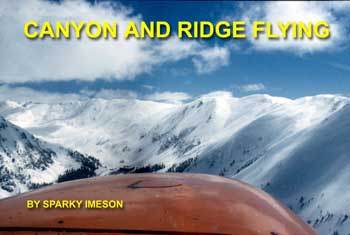
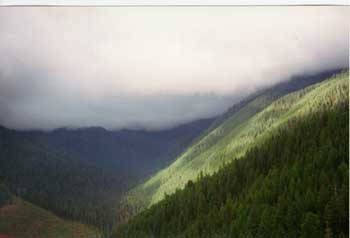
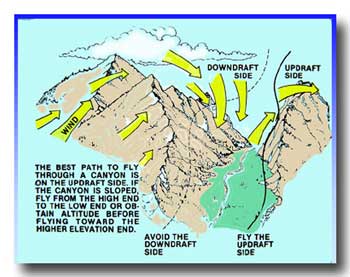
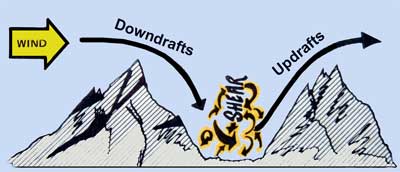
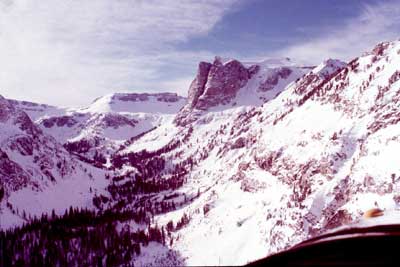
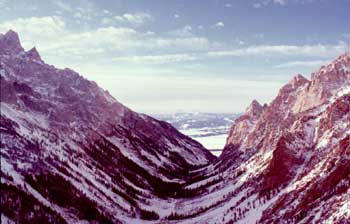
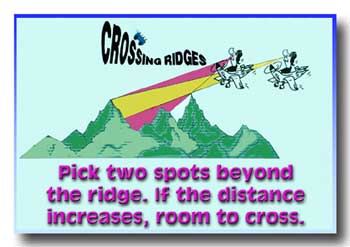

 Reply With Quote
Reply With Quote





Bookmarks